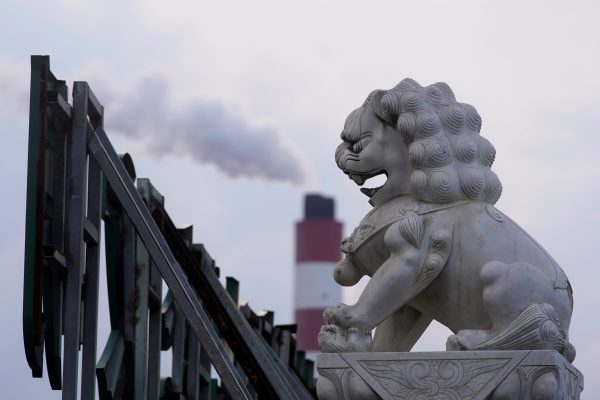The announcement came as a surprise following China’s recent wrangling on the coal issue with the United States. In early September 2021, US Climate Envoy John Kerry visited China but failed to secure a Chinese declaration for a moratorium on financing international coal-fired projects. China’s Foreign Minister Wang Yi explicitly told Kerry that ‘China–US cooperation on climate change cannot be divorced from the overall situation of China–US relations’.
How to square these two images, separated by mere weeks? On the surface, Xi’s new pledge looks like an about-face in China’s previously staunch opposition to US demands. But if you look deeper, it simply reflects a continuation of what China has been undertaking for years.
Analysis of a new dataset that has been made available from the Global Energy Monitor (GEM), a US-based research and advocacy group that tracks coal-fired power projects around the world, confirms this.
China provided financial support to 81 gigawatts (GW) of coal-fired power stations worldwide from 2007 to 2020. Of the total, 43GW of coal-fired projects have been in operation, 24GW are currently under construction and the rest are in the planning phase or have been cancelled. Put into perspective, Chinese-funded coal projects (43GW) accounted for just 11 per cent of newly operating coal-fired power generating capacity outside of China between 2009 and 2020.
These results paint a very different picture from a previous claim by other analysts that ‘more than 70 per cent of all coal plants built today are reliant on Chinese funding’. This inflated estimate has also been reported in many media outlets. The seemingly close links between China and new coal projects have been exaggerated.
The error in previous estimates is possibly due to confusion between coal projects and those receiving foreign funds. The disparity may also be because many previously announced coal-fired projects involving Chinese funds were cancelled. The GEM data reveals at least 45GW of coal-fired power projects that involved funds from Chinese institutions were cancelled. Chinese financing in coal projects overseas has been in decline in recent years. From 2015 to 2017, 31GW of coal-fired power projects received funding support from China, compared to 18GW from 2018 to 2020.
The changing appetite of Chinese funders seems to have been caused by a new market reality abroad and the shifting policy orientation at home. Pakistan announced in December 2020 that no new coal-fired power projects will be built in the country. Indonesia has decided not to approve any new coal-fired power plants beyond 2025. Vietnam is also pushing renewables in its energy mix, installing more solar power capacity than any other Southeast Asian country. These are among the largest recipient countries of Chinese funds for their coal projects.
Recent domestic policies have also impacted the decisions of Chinese banks and enterprises to wind down financial supports for overseas coal projects. In 2020, the National Development and Reform Commission, the Ministry of Environmental Protection and three central financial regulators issued a regulatory guideline on the investment and financing activities of Chinese financial institutions and enterprises abroad to prevent and resolve climate-related risks.
Growing international pressure may also have played a role. Just two days after Kerry finished his trip in China, COP26 President Alok Sharma visited the country to seek a greater level of climate commitment ahead of COP26. These international engagements are certainly useful. But like its other climate actions, internal factors played a more decisive role in China’s decision to exit new coal overseas.
Despite being a natural extension of China’s existing activity, the new announcement is still significant. The largest financier of coal in the world has officially cut its ties with future coal projects. This development sends a clear message to coal producers globally, including Australia, which exported 390 million tonnes of coal in 2019–20.
As more countries move to close their ageing coal power stations and scrap plans for new ones, Australian coal exporters face a dim future. But as the door to coal closes, the window to green energy remains wide open. It is up to Australian enterprises to seize the opportunity.
Hao Tan is Associate Professor at the Newcastle Business School, University of Newcastle.
Elizabeth Thurbon is Deputy Head of School (Research) and Scientia Associate Professor of International Political Economy at the School of Social Sciences, University of New South Wales (UNSW). She is also an Asia Society Fellow.
John Mathews is Professor in the Department of Management, Macquarie University.
Sung-Young Kim is Senior Lecturer at the Macquarie School of Social Sciences, Macquarie University.
The authors thank Global Energy Monitor for providing the data. For further technical details about our calculation, please refer to a post of the lead author at the Pekingnology newsletter.


Thanks for the article. So what are the authors’ views on what happened at COP26, when both China and India wanted the final draft Glasgow Climate Pact agreement to commit to a ‘phase down’ rather than a ‘phase out’ of coal? What are we to make of this position adopted by China on coal?